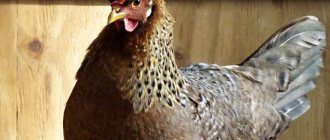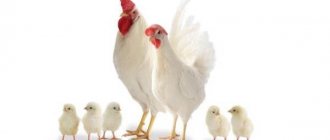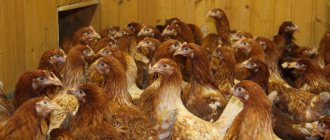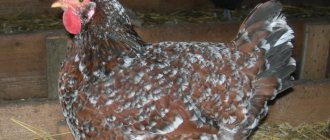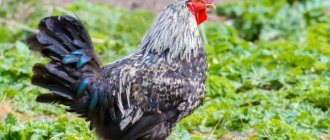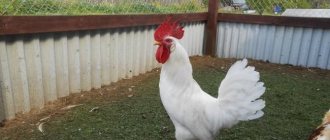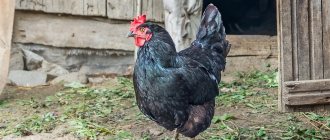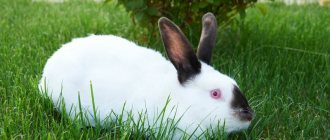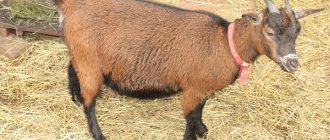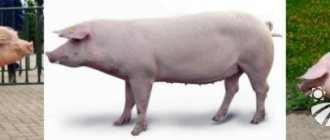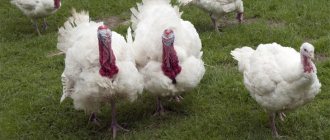Many ornamental breeds are considered the fruit of the breeding activities of scientists and poultry farmers in Asia. But some of them were also bred for meat and eggs. One of these ancient breeds is considered to be the curly-haired chicken. It has been bred for several centuries. Due to its distinctive exterior, the bird is very popular in Russia. She has feathers curved upward, which creates a “shaggy” effect. The birds are also very calm. Before breeding them, it is worth studying more about the characteristics of the breed.
Story
Curly-haired chickens are also called Shershetki. Quite an ancient species that has decorative characteristics. In which country the bird originated is still unknown, as is the date of its appearance. Scientists suggest that this happened a couple of centuries ago in the southeastern region. Later it began to spread throughout the world.
A serious club community exists in Europe, but in Russia, curly-haired chickens are rarely seen. Many poultry farmers have still not come to a consensus on whether these birds can be considered a separate breed. Those individuals that have average curliness fit the standard. The gene that controls the curvature of feathers is hereditary and dominant. That is why, when glaciated birds are crossed with curly-haired birds, the latter are obtained. This is ideal if you want to use the bird for show and just get a purebred breed. They will meet the standard. This is exactly what many who breed these birds do.
Where to buy in Russia?
In Russia, this breed can be called rare, but its unusual appearance and unpretentiousness help curly-haired chickens to gain more and more popularity.
In some farms you can buy eggs and young curly-haired chickens, but their prevalence varies greatly from region to region.
Here are a few farms that deal with curly-haired chickens:
- Kursk farm Kukareku, tel., address: Kursk, st. Dubrovinskogo, 14;
- Perm farm IP Radosteva Tatyana Petrovna, tel: +7 (902) 800-32-70, e-mail, address: Perm region, Dobryansky district, village. Polazna St. Nagornaya 19;
- peasant farm, head Maria Rudakova, tel: +7 (912) 617-92-76, e-mail, address: Sredlovskaya region, Ibrit.
In some regions, you can also find curly-haired chickens on small farms and private backyards.
Main characteristics
There are two types of curly hen: regular and dwarf. Representatives of the breed are small in size and have:
- small lobes;
- round earrings of white and red color;
- feathered legs;
- wide body;
- medium sized neck;
- long wings;
- a medium-sized tail that looks disheveled.
We also recommend that you read the information about Pavlovsk chicken breed.
The weight of a rooster of this breed reaches up to three kilograms, and a chicken up to 2.1 kg. Egg production usually begins at six months, but may occur later in very curly ones. The color of the bird is varied. We are talking about both white and black shades, and brown.
Puberty and egg production
The speed of puberty and egg production of curly hens is practically no different from many representatives of the meat-egg type. Average rates of maturation are observed in most of the flock - as a rule, 70-80% of laying hens begin laying at six months of age, and the rest - later.
Poultry farmers have noticed an interesting trend - the curlier the chicken, the later it will begin to lay eggs. The average annual egg production is 120 pieces. The eggs are small in size - up to 45 grams each, covered with a beige shell.
Content
Birds of this breed are not capricious. There will be no extra hassle in caring for them, but there are still some features that need to be taken into account.
Construction of nests and perches
Due to their peculiar plumage, birds cannot fly. Therefore, even a small obstacle can become insurmountable for them, and jumping from a great height leads to injury.
It is better to place nests and perches at an acceptable height - the chicken should be comfortable jumping there. The ideal option is no more than thirty centimeters from the ground.
It is better to create a warm nest for the birds - this will provide additional comfort during overnight stays. But this moment requires special attention, as feather fragility may occur. Therefore, the poultry room should be more spacious.
The bird family should also not be crowded. Otherwise, they will lose their exhibition appearance. Roosters are usually kept separately to avoid fights.
We also recommend that you read: “Vietnamese Chicken”.
Temperature requirements
Due to its loose plumage, the bird is very sensitive to cold weather. To maintain the health of birds, they need a higher temperature in winter than smooth-feathered individuals.
Since this breed spends a lot of time on the floor, make sure to provide thick bedding. Thermophilia affects the appetite of birds. In the cold season, chickens require chrome with increased energy value, although at other times of the year they are quite unpretentious in their diet.
Humidity
The curly-haired breed does not like it when this indicator is increased, since their plumage has no protective function. Therefore, even the slightest increase in this indicator in the chicken coop will cause a cold. In the warm season, it is better for the bird to avoid places where there is a swamp and other flooded areas.
Feeding
Representatives of this breed will eat everything you offer them. Experienced farmers advise creating a diet in such a way that forty percent of the total feed volume is grain. This is beneficial as the latter contains a large amount of protein. It must be given in the morning and evening, and at lunch the bird can eat greens, vegetables and wet mash.
To ensure your chickens have good digestion, add shell rock to the feeder. If you don't have it, you can use fine gravel. Make sure there is always clean water in the drinking bowls. The latter should be at room temperature. It is advisable to wash containers daily. It’s ideal if you add boiling water over it. This is especially necessary when feeding wet mash. Leftover food accumulates microbes. Untimely disinfection of containers can lead to illness.
In order for the feathers to grow, you need to add seeds and cabbage leaves to the diet. During molting, feed the food with yeast.
There are two feeding methods: dry and wet. Both cases contain cereal crops. Fish and dairy waste will not be superfluous. After wet food, the feeder must be rinsed.
In summer, it is enough for birds to walk on a green lawn, and in winter, dried nettle, pine and bean flour can be a substitute for green food. Don’t forget about calcium and phosphorus, because this is the basis for the development of bone tissue and the formation of the shell.
You can read about Cornish chicken here.
Productive qualities
The meat and egg breed is attractive not only due to its appearance, but also due to its productive performance. Of course, it cannot be compared with the Russian white breed, but still these birds produce eggs and meat.
Every year, the Curly Layer lays 120 to 140 eggs. The shell is beige or brown in color, and the weight of one egg reaches 55 grams. When egg production declines, the birds are sent for slaughter. Their meat is sweetish, has a dense consistency and is quite nutritious.
Description of the breed with photos and productivity characteristics
There are two varieties of shershetkas, as curly-haired chickens are called - regular and dwarf. The latter are distinguished by their miniature sizes. The main feature of birds is the curved feather shaft. Chicks inherit the curl gene from their parents.
It is known that when bred internally, this trait weakens or, conversely, manifests itself too strongly, but only chickens with an average degree of curl are recognized as meeting the breed standard. It is for this reason that when breeding shershetkas, representatives of this breed line are crossed with smooth-feathered chickens.
Characteristics of the exterior of birds
Curly-haired chickens are medium-sized birds with feathered legs. Their colors come in different colors - white, black, brown or silver. Because of the feathers sticking out in different directions, the birds look disheveled, which, however, does not spoil their appearance at all.
Exterior requirements:
- rooster weight – 2.7–3 kg, chicken – 1.8–2.1 kg;
- rounded body shape;
- a small head with a red leaf-shaped or rose-shaped comb flaunting on top;
- medium-sized white lobes;
- red earrings, round in shape;
- the body is wide, the chest is well developed;
- neck of medium length;
- the wings are quite long, drooping down;
- the tail is slightly raised;
- paws are short, well feathered.
Reference. Curly-haired chickens of Polish selection have a crest on their heads.
Temperament
Owners of shershetkas speak positively about them. These are peace-loving and calm birds that quickly become attached to their owner and are given into the hands. There is no aggression observed among them. Curly laying hens are also excellent hens. Birds have a good appetite.
Productive qualities
The curly breed of chickens for meat and eggs attracts farmers not only with their beautiful appearance, but also with good productivity indicators. Of course, she cannot compete in egg production with Leghorns or Russian White chickens, but she is still able to provide her family with meat and eggs.
The curly hen produces about 120–140 eggs annually. The shell is beige or brown, the egg weight is 55 g. Oviposition begins at six months of age. After a year, egg production decreases, after which the birds are sent for slaughter. Shershet meat is sweetish, with a dense consistency, and nutritious.
How to breed
Chickens have an excellent brooding instinct. 95% of chicks born survive. At the same time, they are strong and quite active.
Molting and break in egg laying
Due to rapid molting, there is little break in egg laying. But during the change of plumage, birds are vulnerable to temperature changes and humidity. Therefore, you need to keep the conditions under control and monitor the diet.
Seasonal shedding is considered a natural process that generally occurs without harmful health consequences. But there is also “unscheduled” molting, which usually begins in all birds due to improper nutrition and if the flock is infected with lice eaters. It has a huge impact on productivity. The problem must be solved as soon as possible - either by treatment or by improving the diet.
Planned herd replacement
Unfortunately, the bird cannot boast of longevity. She is quite sensitive to various diseases, and also loses immunity with age. In addition, the clutch declines in the third year of life. Therefore, it is optimal to maintain one generation for three years.
Features of breeding curly chickens
To obtain young animals that meet the breed standard, slightly curly or smooth-feathered chickens are crossed with curly-feathered ones. With this approach, approximately 50% of the chicks will have the desired traits.
Puberty in shershetkas occurs at 6 months. Chickens have a good brooding instinct. Chicks are born strong and active. Almost 95% of the chicks survive. In the first days of life, babies are kept in brooders, maintaining a temperature there close to 30 degrees Celsius. Chicks need a lot of protein, so they are fed eggs, low-fat cottage cheese, boiled white fish and ground corn and millet.
Attention! For incubation, it is recommended to take eggs from hens that lay eggs three times a week.
Breed analogues
If you are a connoisseur of extraordinary exterior and a fan of curly-haired chickens, we recommend that you pay attention to analogues of the breed. Among them are:
- Chinese silk. The plumage is similar to down, and the birds themselves resemble soft balls. They are the most demanding in terms of living conditions, but are also adapted to the climate in Russia.
- Araucanu. We are talking about tailless birds. The eggs are laid blue. They are very easy to keep, but sometimes problems arise with breeding.
- Polish curly. It has an unusual appearance - in addition to curved feathers, the birds have a crest and whiskers on their heads. If we consider their productivity, then it is slightly worse than that of Shershetok - the chicken weighs 1 kg less, and the egg production is lower.
How to keep curly hens
Caring for such an unusual breed is quite a painstaking task. Due to their curly nature, birds require special care.
The feather cover does not hold heat well, so the room should warm up well. Also, place a fairly dense bedding on the floor. In cold areas you cannot do without heating devices. The curvier the breed, the more heat it requires. In addition, in winter, more feed is spent on warming.
Curly feathers are very brittle. For this reason, the chicken coop is equipped with special care. In cramped spaces they will quickly lose their attractive appearance.
Keeping roosters and hens together will lead to baldness. You should think about such points in advance. Decide what the purpose of cultivation is.
As already mentioned, the breed is not adapted to summer. Perches should be installed low to the floor so that birds can climb onto them freely. The litter is insulated several times. The nests are also made low and warm so that the chickens feel comfortable and cozy in them.
Feathers are not only brittle, but also do not tolerate moisture well. She is completely excluded from the coop. Carefully inspect the roof to make sure there are no leaks anywhere. Curly hens are afraid of rain. You should take care of a good canopy. Perhaps, apart from these shortcomings, the breed has no other ones. Chickens are unpretentious in care and feeding. Keeping chickens is quite profitable; their attractive appearance is combined with excellent productivity.
As a result of crossing curly chickens with regular, smooth ones, interesting results are obtained. Chicks may have slight to moderate curl.
curly young
At first, curly-haired chickens and their parents have practically no common external signs. The situation changes only after they are completely feathered. This process is slow. Even if you feed the young well, chickens cannot quickly change their fluff. The weight of one chicken reaches 45 g on the first day. Later, weight gain occurs quite quickly. Feeding and care are standard - like all Curly breeds of chickens. From the third day of life, you can add fish oil to your diet. This will strengthen their immunity and plumage.
Feeding
Chickens should be given fish oil from the third day of life. Cottage cheese and grated boiled eggs are also included in the diet.
For feeding adults, mixed feed, wet mash, and grass are used. If necessary, for example, during molting or when the cold season sets in, add additional vitamins to maintain immunity.
To saturate the body with calcium, chalk or crushed egg shells are used, the container with which should be placed near the feeder.
- Stern
- Recipes
- Supplements
Compound feed pk-1
Description of food for egg breeds. Instructions for feeding laying hens
Read
Compound feed pk-2 and pk-3
Mineral and vitamin compositions, feeding standards
Read
Compound feed pk-4
Used to feed laying hens aged 15-17 weeks
Read
Compound feed pk-5
Composition and instructions for feeding broiler chickens
Read
Purina® Pro
Important differences from the previous line, application patterns Start, Growth, Finish
Read
Barley and wheat for laying hens
Germination and steaming of barley and wheat for chickens: how to do it correctly and how to give it to laying hens
Read
Wheat for broilers
Rules for feeding broiler chickens with wheat. Dosage for chickens from the second day of life and adult birds
Read
Mash
Making mash for broilers at home
Read
Rice and buckwheat
How and in what form you can use rice and buckwheat to feed chickens. Standards for adult birds and chickens
Read
Bread
What kind of bread can you feed chickens and how to do it correctly
Read
Fish
The product is given in limited quantities: overfeeding can cause serious harm to the bird
Read
Chalk
Chalk as a food additive for chicken feed. Feeding standards for chickens, young animals and laying hens
Read
Meat and bone meal
Meat and bone meal is a mandatory additive for feeding chickens, containing protein and fats of animal origin.
Read
Fish fat
How to give fish oil to chickens, layers and broilers. What are the benefits of the drug and are there any contraindications?
Read
Limestone
Limestone (dolomite) flour in the diet of chickens. Advantage over chalk and feed shell
Read
Salt
Daily dosage of salt for adult birds and young animals and cases of unwanted use
Read
Frequent illnesses
Curly-haired birds get sick quite often. According to statistics, the survival rate of adults ranges from 80 to 85 percent. The figure can be increased if you surround the chickens with care and give them good, proper care. Quotes can suffer from parasites, mites and colds. They also do not tolerate temperature changes well. Poultry farmers should take preventive measures and take care of safety as much as possible.
Advantages and disadvantages
One of the main advantages is their character - they are calm and not shy. They are distinguished by high curiosity. Chickens quickly get used to their owner and go into the hands.
Other advantages:
- beautiful exterior;
- brooding instinct;
- meat and egg breed.
Minuses:
- weakened immune system;
- rare species, difficult to find;
- demanding conditions of detention.
Flaws
- Poor health.
- Requirement for care.
- Rarity.
So we looked at one of the fewest birds on the planet. While the Curly breed of chickens has not completely disappeared, you can share an article about it with your friends on social networks - maybe they will be interested in this topic. Subscribe to site updates to be the first to read new, interesting articles!
We wish you success, and see you again!
Did you like our tips? Share with friends on social media. networks! See modern products for poultry and livestock farmers that improve the health of pets and make our work easier.
